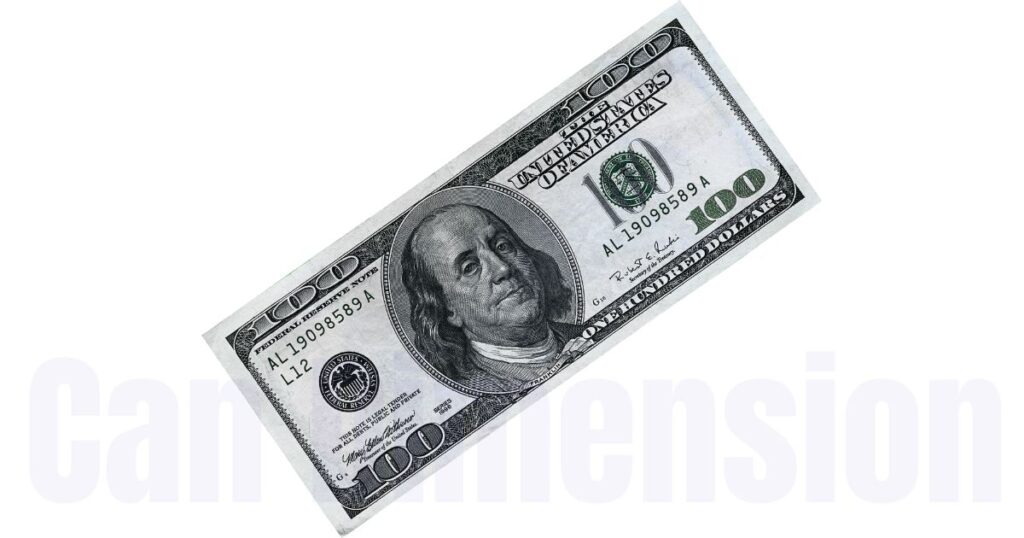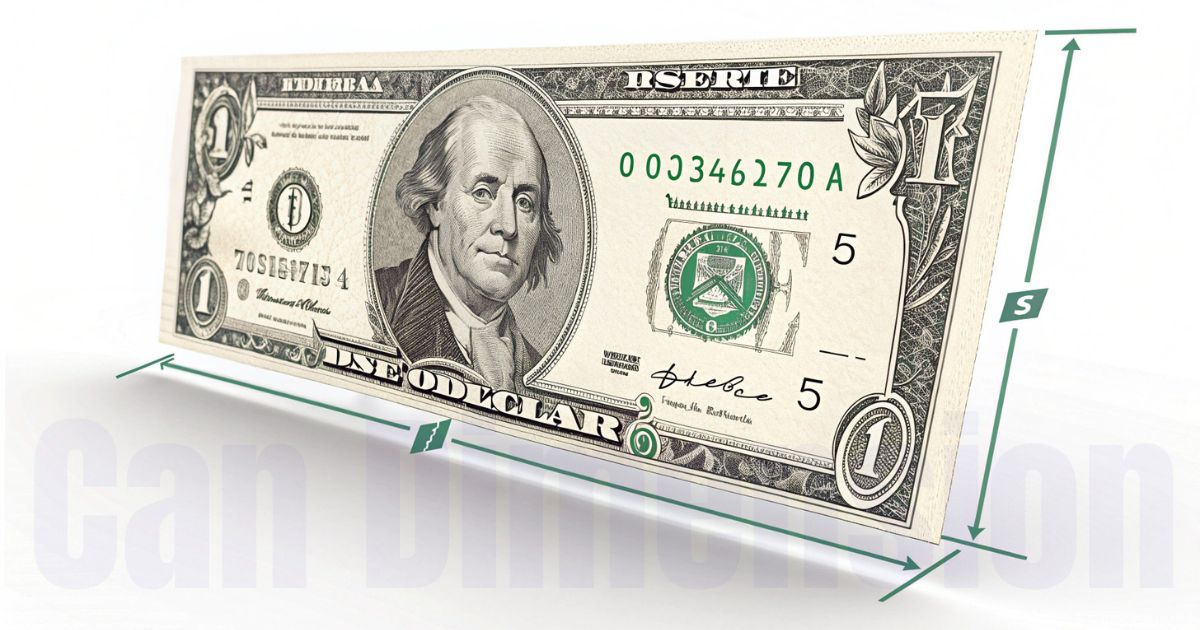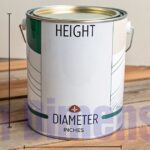U.S. currency has a specific size that’s been standard for nearly a century. Knowing these dimensions isn’t just trivia. It matters for collectors, educators, business owners, and anyone curious about American money. Plus, it’s pretty fascinating stuff.
In this guide, we’ll break down everything about dollar bill dimensions. You’ll learn exact measurements, historical changes, comparisons with world currencies, and some surprising facts about the cash in your pocket.
Dollar Bill Dimensions in Different Units
Let’s make these numbers easy to remember. A dollar bill is just over 6 inches long and about 2.5 inches tall. If you measure with a ruler, it’s slightly longer than a credit card but not quite as wide.
In centimeters, that’s 15.6 cm by 6.6 cm. Stack 10 bills together and you get about 1 millimeter of thickness. Stack 100 and you’re at roughly half an inch. These conversions help whether you’re working on a school project or setting up a display case.
Quick Reference Table
*Approximate values for a standard U.S. dollar bill. Exact measurements may vary slightly due to wear.
Need more details? Compare with everyday objects: A dollar bill is roughly the size of a standard playing card (shorter and narrower) or half a smartphone screen in portrait mode.
Are All Dollar Bill Dimensions the Same?
One Size Fits All U.S. Currency
Yes. Every denomination of U.S. currency shares identical dimensions. A $1 bill is the same size as a $5, $10, $20, $50, or $100 bill. This uniformity is unique to the United States.
The Federal Reserve chose this approach for practical reasons. ATMs don’t need to adjust for different sizes. Vending machines work with any bill. Wallets don’t need special compartments. Mass production becomes cheaper and simpler when everything’s uniform.
Historical Dollar Bill Sizes
Before 1929, American paper money came in various sizes. These older bills were called “horse blanket currency” because they barely fit in wallets. Some measured up to 7.4 by 3.1 inches, nearly 30% larger than today’s notes.
That time marked a turning point. The Treasury decided to standardize everything. Smaller bills saved on production costs. They lasted longer in circulation. Banks could store more in the same space. The change modernized American money overnight.
Dollar Bill Dimensions by Denomination

Common Denominations
$1 Bill Dimensions: Measures 6.14 x 2.61 inches. Features George Washington on the front, based on Gilbert Stuart’s Athenaeum Portrait. The back shows the Great Seal of the United States, including both the eagle and the unfinished pyramid with the all-seeing eye.
$5 Bill Size: Identical measurements with Abraham Lincoln’s portrait. The Lincoln Memorial appears on the reverse. Purple accents were added for security features in recent series.
$10 Bill Measurements: Same standard dimensions. Alexander Hamilton graces the front. The U.S. Treasury building sits on the back. This is the only bill without a president’s portrait.
$20 Bill Dimensions: No variation in physical size. Andrew Jackson’s portrait replaced Grover Cleveland. The White House fills the reverse design. It’s the most widely circulated denomination in America.
$50 Bill Size: Maintains standard measurements with Ulysses S. Grant’s image. The U.S. Capitol building appears on the back. Green and peach colors help prevent counterfeiting.
$100 Dollar Bill Dimensions: Despite being the highest value in common circulation, it’s still 6.14 x 2.61 inches. Benjamin Franklin’s portrait and Independence Hall make it instantly recognizable. Blue security threads and color-shifting ink protect against fakes.
Rare and Discontinued Bills
The $2 bill still exists but rarely circulates. It has the same size as all other denominations. Thomas Jefferson appears on front, with the signing of the Declaration of Independence on back. Many people collect them thinking they’re rare—they’re not, just uncommon.
Large denominations like $500, $1,000, $5,000, and $10,000 bills were discontinued in 1969. All shared the standard 6.14 x 2.61 inch dimensions introduced in 1929. The Federal Reserve pulled them from circulation to combat organized crime.
The $10,000 bill featured Salmon P. Chase, who served as Treasury Secretary and Chief Justice. Printed from 1928 to 1945, only a few hundred remain. Most sit in museums or private collections worth far more than face value.
The $100,000 gold certificate existed but never entered public circulation. Only used for transactions between Federal Reserve banks. Woodrow Wilson’s portrait graced the front. These notes stayed the same size as regular currency despite their extraordinary value.
Dollar Bill Thickness and Stack Height
How Thick Is a Dollar Bill?
A single bill measures just 0.0043 inches thick. That’s thinner than two sheets of regular printer paper. Yet it feels more substantial because of its cotton-linen composition.
United States notes aren’t made from wood pulp like regular paper. They’re woven from 75% cotton and 25% linen. This blend creates durability that regular paper can’t match. A dollar bill can withstand about 4,000 folds before tearing.
Stack Calculations
Stack 10 dollar bills and you get about 0.43 millimeters—barely noticeable. Put together 100 bills and the stack reaches roughly 0.43 inches, less than half an inch tall.
Here’s where it gets interesting. A thousand dollars in one-dollar bills creates a stack about 4.3 inches high—the height of a coffee mug. Ten thousand dollars? That’s 43 inches, or about 3.5 feet tall.
A million dollars in $1 bills stacks to approximately 358 feet. That’s taller than the Statue of Liberty (305 feet). In $100 bills, a million dollars shrinks to just 3.58 feet—manageable enough to fit in a large briefcase.
Other Dimensions: Beverage Can Dimensions: Size, Height and Length
Questions
What are the dimensions of a US dollar bill?
A U.S. dollar bill measures 6.14 inches long by 2.61 inches wide. In metric units, that’s 156mm by 66.3mm. The thickness is 0.0043 inches or 0.109mm. Every denomination uses these exact measurements.
What’s the size of a $100 bill?
The $100 bill is exactly the same size as all other U.S. currency: 6.14 x 2.61 inches. Despite being the highest denomination in common circulation, it shares identical dimensions with the $1 bill. Only the design, colors, and security features differ—not the physical size.
What is the size of a $20 bill?
The $20 bill measures 6.14 inches by 2.61 inches, identical to all United States currency denominations. It’s the most circulated bill in America, used in ATMs nationwide. The dimensions haven’t changed since 1929 when the Treasury standardized paper money.
What does a $10,000 bill look like?
The $10,000 bill featured Salmon P. Chase, Treasury Secretary under Lincoln. It measured the standard 6.14 x 2.61 inches, identical to regular currency. The front showed Chase’s portrait with green Treasury seal and serial numbers.
Conclusion
The U.S. dollar bill’s 6.14 x 2.61 inch dimensions represent nearly a century of American financial history. Since 1929, these measurements have remained constant through wars, economic shifts, and technological advances. That stability reflects the dollar’s role as a global standard.
These dimensions shape everything from wallet design to international banking systems. The uniform size across all denominations prioritizes efficiency and machine compatibility. While other countries opted for variable sizing to aid accessibility, America chose consistency for practical and economic reasons.

Haru, the dedicated Admin of candimension.com, curates an informational blog on Can Dimension. With passion and expertise, Haru delivers insightful articles to educate and empower readers on this fascinating niche.










